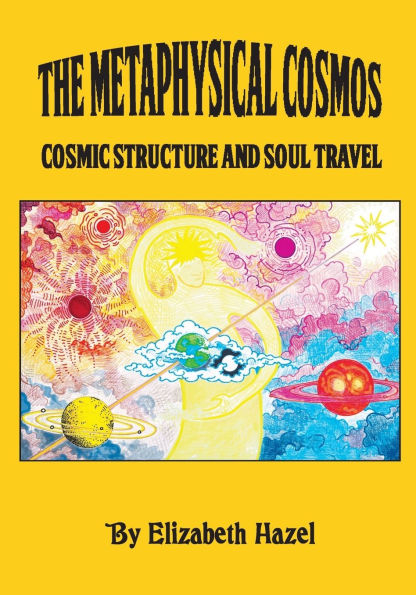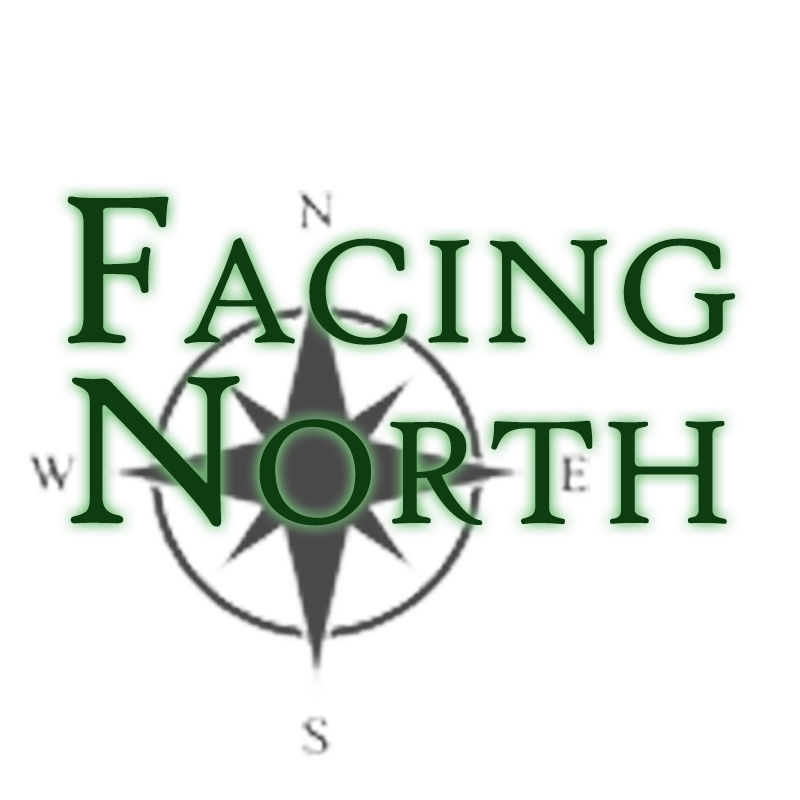Astrology has many purposes, along with many emphases and techniques. In our times, people often consult with astrologers hoping to gain insight about their personalities and relationships, or to glean whether good or challenging events are on the horizon. Astrology is also an art and science for glimpsing the Big Picture, as in the origins and meanings of life, including questions of how our souls traverse time and space.
Hot off the presses comes a new book by Elizabeth Hazel, one of our Facing North reviewers. She’s a long-time tarot and astrological scholar and consultant. She has published several books on tarot and one on fixed stars, two of her areas of expertise.
The Metaphysical Cosmos is something she’s been working on for a long time. She was inspired in her many years of research about reincarnation by the classic 1969 book called Hamlet’s Mill: An Essay Investigating the Origins of Human Knowledge and Its Transmission Through Myth by Georgio de Santillan and Hertha von Dechend, two professors of the history of science. They argued that myths across world cultures are remnants of preliterate astronomy and, as Elizabeth summarizes their thesis, that “the structure of the cosmos and soul travel are inseparable.”
With Hamlet’s Mill as her jumping off point, Elizabeth’s book is a sweeping study of world cosmologies, and how the quests for understanding the great matters of birth and death are intertwined with the histories of astronomy and astrology. Her book is organized in two parts.
Part 1 is a tour of thousands of years’ worth of work by “the metaphysical philosophers of antiquity,” beginning with ideas about time, as astrology is “the study of time and planetary cycles.” There’s time as in a human life span and the applicable planetary cycles; collective time as in 100+ year durations of societies; and cosmic time, or ages, associated “with the rise and fall of mighty civilizations and gods.”
Ancient observers – scientists in their own right – tracked movements of stars, planets and the Sun and left copious evidence of their knowledge in enduring, discoverable sites. The oldest site marking astronomical observations is Nabta Playa, located in the southwest desert of Egypt and dating back to between 11,000 and 6,000 BCE.
Sky wisdom was compiled and survived through oral traditions and myths, long before the advent of writing, with letters and numbers. Humans didn’t suddenly “get smart just because someone figured out how to write,” Elizabeth quips. Archeologists have found evidence of detailed celestial knowledge dating back to 15,000 BCE or earlier. There’s evidence that humans were aware of lunar cycles as early as 30,000 BCE. “The earliest literate civilizations that have had the most influence on Western thought – the Egyptians and Mesopotamians – didn’t emerge from nowhere, and they didn’t suddenly acquire oodles of knowledge about celestial movements,” Elizabeth writes.
The Egyptians, she says, “were obsessed with time and the soul’s journey into the afterlife.” But they didn’t start using constellations in their astronomy until late in their civilization’s trajectory when they were influenced by the Greeks and the Mesopotamians. That, Elizabeth explains, is because constellations mark space and time and are therefore useful for navigation. The Egyptians weren’t navigators. They were sedentary agrarians. They didn’t need a map. They used the sky as a clock and calendar. Their cosmology evolved accordingly, based largely on the timing of human births and deaths, coinciding with the rising and setting of stars.
The Egyptians had a name, Akhet, for the reddish glow appearing in the eastern sky about an hour before sunrise. This isn’t the horizon but the region below the horizon. The Akhet was thought to be a “cosmic combustion chamber capable of triggering rebirth and/or transubstantiation.” This area of the sky was the source of the idea of an Ascendant (rising sign) and the first house in a birth chart. Thus, the Egyptians birthed the knowledge of the Ascendant, which was crucial for the development of astrology. It’s where “the soul gets a body and becomes effective.”
Egypt’s great civilization lasted 3500 years, the Mesopotamian civilizations only about 500. The Mesopotamian astronomers watched the “fixed” star constellations, attaching to them storylines and characteristics. They devised a zodiac, “a group of star images mostly contained in the ecliptic, the central band of sky where the Sun and planets travel.” Among the Mesopotamians, astronomers understood that “fixed” stars aren’t really fixed. They move slowly, one degree every 72 years. That movement necessitated the development of a second “zodiac 2.0,” that accounts for this gradual movement of stars. This zodiac developed around 500 BCE and was used by the Greeks when they developed astrology, starting probably around 300 BCE.
This is the zodiac used to this day. It works along with western astrologers’ understanding of cosmic time and the phenomenon called the “precession of the equinoxes.” There’s a very slow shift of the Earth’s axis that causes the spring and fall equinoxes and the solstices to shift their position in the sky relative to the stars over a period of 25,772 solar years, called a Great Year or a Platonic Year. A Platonic Year divided by twelve zodiacal signs yields twelve Platonic Months or 2,150 years, which constitutes an Age or Aeon. Further division by twelve gives a Platonic Day of 179+ years, corresponding to the 180-year period in which conjunctions of Saturn and Jupiter occur about every 20 years in the same element.
Elizabeth describes herself as both a “science geek” and an “astrology geek.” She makes the astronomy in this book accessible. I can’t do justice here to the in-depth scope of her treatment of the history of astronomical knowledge across cultures. The facts are awesome, though. For example, as early as the 3rd century BCE, some ancient people knew that the Earth orbits the Sun, even though that contradicts what the human eye can see.
A major point of The Metaphysical Cosmos is that the creation myths of various world cultures specify that a Cosmocreator creates soul portals that lead souls to pathways to and from the afterlife. “These are an inseparable component of soul transmigration. No portals and pathways, no soul travel,” she writes.
Part II of The Metaphysical Cosmos draws together much of what astrology offers on questions of fate versus freedom, what a birth chart reveals – or at least suggests—about a soul’s incarnation. The Ascendant sign, the Sun, Moon, and certain points in a chart not occupied by any celestial body are “fate indicators,” particularly if they are conjunct to a “soul portal.” There are many soul portals, including solstice points, the lunar nodes where the Moon’s path moves north or south across the ecliptic, as well as particular degrees like the last ten degrees of Gemini and the last ten degrees of Sagittarius, including 26 degrees of Sagittarius, called the Galactic Center of our Milky Way galaxy.
Mercury, traveling close to the Sun, has figured large in the study of soul travel. Mercury the Messenger has many roles in myth, including that of the psychopomp who carries souls to the realms of the afterlife. In astrology, Elizabeth writes, “if Mercury makes natal or secondary progressed major aspects to the [lunar[ Nodes, it’s a red flag that something’s churning with the incarnation. This may represent a special connection between the individual and the collective, the cultural environment, or zeitgeist. It may indicate the individual has an important but possibly invisible impact on the lives of others.”
My own mercurial curiosity had me wondering why Elizabeth doesn’t mention the branch of astrology called evolutionary astrology, popular since about the 1980s. Practitioners of EA believe that features of a natal chart such as Pluto by house, sign and aspect, as well as the sign and house pairings of the lunar nodes, along with the planet ruling the south lunar node, allow them to tell stories about someone’s “past lives.” I asked Elizabeth about EA, and she replied that it’s simply not something she does. Her focus is on the soul portals that help to delineate individual potential in someone’s current incarnation.
Her point is that “theories about souls, soul travel and fate swirled around the early development of astrology. Those ideas have been lost or garbled over the intervening centuries. Reclaiming those theories makes it clear that birth charts are a singularly useful method for mapping the soul’s purpose.” That’s crucial for empowering people to apply their own agency to work with what fate has given them.
The Metaphysical Cosmos is a welcome contribution to the astrology world because it captures and explains the interplay between astronomy, astrology, and metaphysical inquiry, over millennia. This book shows us how these sciences and arts arose and remain usefully connected.
I should have said up front that the book is a delight to read – because Elizabeth’s a great wit and because the book is abundantly illustrated with public domain images and with Elizabeth’s own original illustrations. The cover is bright gold like the Sun.
This is a work of cosmic creativity.
Reviewed by: Sara R. Diamond
Author: Elizabeth Hazel
Kozmic Kitchen Press, 2025
170 pp. $29.95

